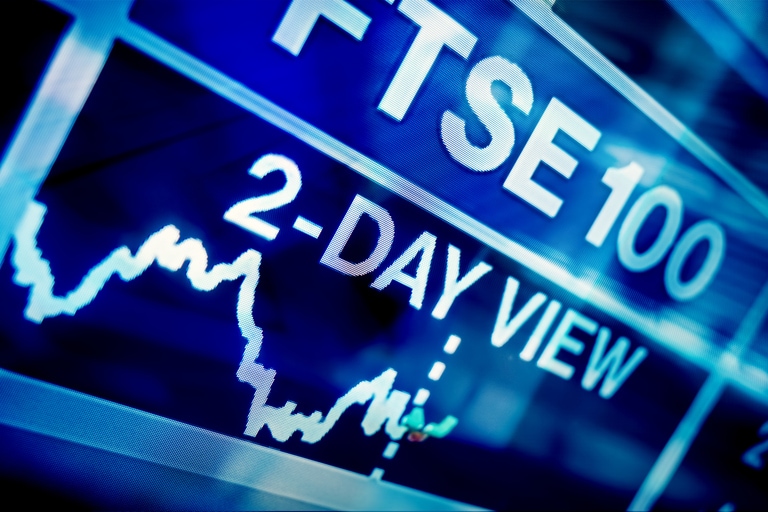Although yesterday’s US inflation report came in weaker than expected, with US core CPI prices slipping back from 4.5% to 4% in August, markets still decided to adopt a glass half empty approach, even though the numbers were exactly what most investors wanted to see.
The slide to 4% serves to reinforce the transitory narrative that central bankers have been pushing for all of the last six months, with respect to concerns over sharply rising prices.
Unfortunately, life is rarely that simple, and while the decline in yields suggested that the dip in inflation could put back the prospect of a taper, from the Federal Reserve it really does nothing of the sort. The Federal Reserve has already indicated that it is focusing on the labour market, with inflation pretty much peripheral to their thoughts in the short term.
Stock markets slipped back on the day, and bond yields fell over concerns that growth is starting to slow and that persistently high prices could well crimp consumer’s disposable income, a trend that could well be reinforced when US retail sales for August are released on Thursday.
While markets in Europe underwent a mixed session yesterday, and US markets also fell back, markets in Asia had to deal with the latest retail sales data from China this morning which showed the full impact of the various port disruptions, and localised covid restrictions that were implemented in response to a delta outbreak during that month. Fears over a crackdown on the casino sector also big losses in the share prices of those companies resident in Macau, like Wynn Macau, and Sands China.
With the most recent Chinese PMIs also showing weak readings, today’s industrial production and retail sales data for August showed that the Chinese economy is undergoing a sharp slowdown of its own.
Retail sales came in at 2.5%, a sharp decline from 8.5% in July, as well as falling significantly short of the consensus of 7%, while industrial production came in at 5.3%, down from 6.4% in July. If investors weren’t worried about a slow down in China’s economy before today’s numbers they probably are now. As a gauge of how much damage the resurgent delta variant is doing to economic activity you couldn’t see a starker example.
Despite the weakness in Asia, European markets look set to open slightly higher this morning with the UK economy remaining in focus, after yesterday’s better than expected unemployment data, which saw declines in the ILO rate to 4.6% in July, as well as the monthly claims number in August. We also saw total numbers on company payrolls return to pre-pandemic levels, while job vacancies hit a new record high of over 1m in August.
These numbers suggest that the decision to end furlough at the end of this month is probably the correct one. That being said, it is becoming clearer that in the post pandemic world we look set to see further job losses in the travel sector as overseas travel becomes less popular, and may not pick up again until next year, at the earliest.
Today the attention turns to the inflation outlook for the UK economy, and despite a dip from 2.5% in June to 2% in July, this is expected to be reversed in the August numbers with both headline and core prices set to surge to 2.9%, and the highest levels since late 2017.
Any rise will also give pause for thought for Bank of England policymakers, particularly in light of comments last week from Bank of England governor Andrew Bailey when he said that four policymakers at the August meeting thought conditions had been met for a rate hike. While that won’t happen in the near future it certainly lowers the bar for a potential reduction in asset purchases, a move that could be signalled as soon as next week’s Bank of England policy meeting. Such a move would also see the Bank of England move before the Federal Reserve on a taper, and who would have had money on that six months ago?
EURUSD – continues to find the upside challenging after this week’s dip below 1.1800 towards 1.1770 earlier this week, prompted a modest rebound to 1.1845. The bias remains for a move towards 1.1750 and previous lows at 1.1660. Resistance remains at the 1.1910 area.
GBPUSD – the pound ran out of puff at 1.3913 yesterday, keeping the lid at 1.3900 intact, however it continues to look fairly well supported with support at the 1.3725 area. As long as we hold above trend line support from the August lows at 1.3755 then the upside potential remains intact. A sustained move through 1.3900 targets 1.4000.
EURGBP – has found steady support at the 0.8510 level this week, however, while below the 0.8560 area the bias remains for a move back towards the 0.8480 area. Above 0.8560 targets the 0.8610 area.
USDJPY – still have resistance between the 110.50/60 area, with support now coming in near to 109.50, as well as the 109.10 area and trend line support from the April lows. Above 110.60 targets 111.00.
CMC Markets erbjuder sin tjänst som ”execution only”. Detta material (antingen uttryckt eller inte) är endast för allmän information och tar inte hänsyn till dina personliga omständigheter eller mål. Ingenting i detta material är (eller bör anses vara) finansiella, investeringar eller andra råd som beroende bör läggas på. Inget yttrande i materialet utgör en rekommendation från CMC Markets eller författaren om en viss investering, säkerhet, transaktion eller investeringsstrategi. Detta innehåll har inte skapats i enlighet med de regler som finns för oberoende investeringsrådgivning. Även om vi inte uttryckligen hindras från att handla innan vi har tillhandhållit detta innehåll försöker vi inte dra nytta av det innan det sprids.






